By Leen Randell
Updated: Jul 03, 2024
10 Best Herbal Tinctures For Jock Itch
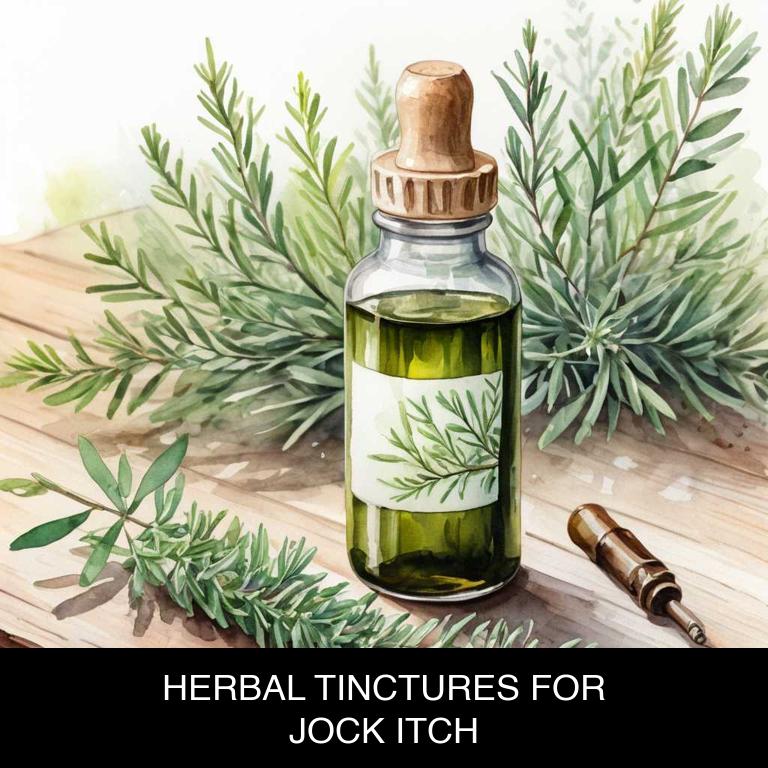
Herbal tinctures for jock itch are liquid extracts made from plants, flowers, and herbs that have natural antifungal and antibacterial properties.
These tinctures help to soothe and calm itching, redness, and discomfort associated with jock itch. Examples of herbal tinctures that show promise in treating jock itch include tea tree oil, garlic extract, and goldenseal.
By using these tinctures, individuals can enjoy relief from the constant itching and discomfort caused by fungal infections, allowing them to regain their confidence and participate in activities without restriction.
The following article describes in detail the most important tinctures for jock itch, including medicinal properties, parts of herbs to use, and recipes for preparations.
- 1. Melaleuca alternifolia
- 2. Calendula officinalis
- 3. Aloe vera
- 4. Cymbopogon citratus
- 5. Eucalyptus globulus
- 6. Rosmarinus officinalis
- 7. Thymus vulgaris
- 8. Capsicum annuum
- 9. Solanum lycopersicum
- 10. Glycyrrhiza glabra
- What is the best combination of herbal tinctures to use for jock itch?
- What ailments similar to jock itch are treated with herbal tinctures?
1. Melaleuca alternifolia
Tea tree tinctures helps with jock itch because of its potent antifungal and antibacterial properties.
The oil extracted from the leaves of Melaleuca alternifolia has been traditionally used to treat a variety of skin conditions, including fungal infections that cause itching, burning, and redness characteristic of jock itch. When applied topically as a tincture, tea tree oil helps to soothe and calm the affected area, reducing inflammation and preventing further infection.
Its natural antimicrobial properties also aid in eradicating the underlying fungus or bacteria causing the infection.
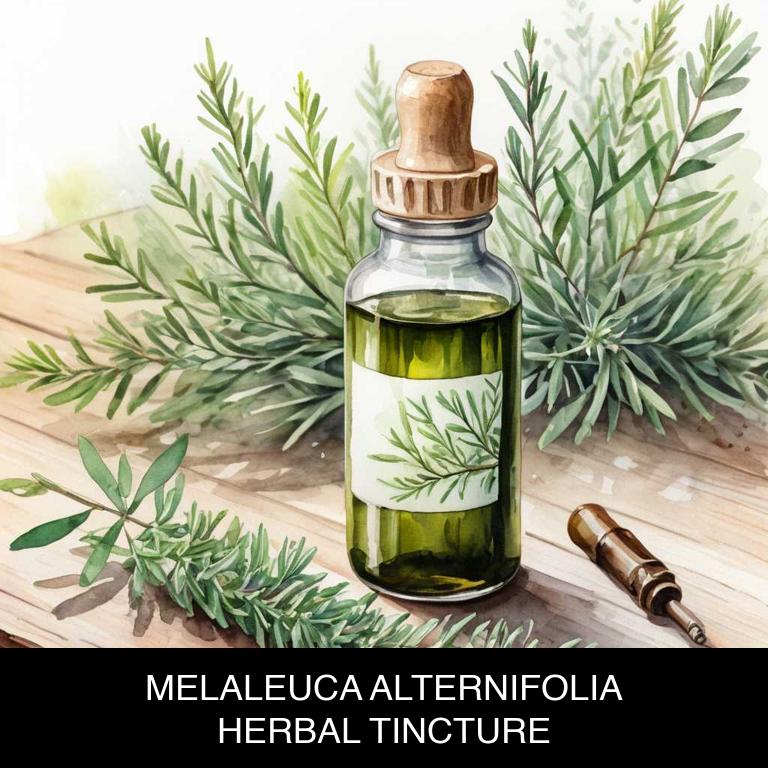
Medicinal Constituents
The list below shows the primary medicinal constituents in Melaleuca alternifolia tinctures that help with jock itch.
- Cineole: As a potent antifungal and antibacterial agent, cineole helps combat the fungal and bacterial overgrowth that causes jock itch, promoting a healthy skin environment.
- Terpinen-4-ol: This compound exhibits potent antifungal properties, specifically targeting the fungus Trichophyton, which is a common cause of jock itch, thereby reducing symptoms and promoting healing.
- Linalool: With its antifungal and anti-inflammatory properties, linalool helps reduce inflammation, soothe skin irritation, and prevent fungal growth, making it an effective component in treating jock itch.
Parts Used
The list below shows the primary parts of tea tree used to make tinctures for jock itch.
- Leaves: Leaves are the primary source of active compounds like terpinen-4-ol, which have antimicrobial properties that help combat fungal infections.
- Stems: Stems also contain terpinen-4-ol and other essential oils that contribute to the antifungal and antiseptic properties of Melaleuca tinctures.
- Barks: Barks of Melaleuca alternifolia contain bioactive compounds that help reduce inflammation and prevent fungal growth, making them useful for treating jock itch.
Quick Recipe
The following recipe gives a procedure to make a basic tea tree for jock itch.
- Harvest the melaleuca alternifolia leaves in the morning after the dew has evaporated to ensure optimal oil content.
- Dry the leaves in a warm place or using a food dehydrator at 95°f for 8 hours.
- Combine 1 part of dried melaleuca alternifolia leaves with 2 parts of 80% ethanol in a clean glass jar.
- Steep the mixture in a cool dark place for 2-3 weeks with occasional shaking to facilitate extraction.
- Strain the liquid through a coffee filter and discard the solids then bottle the tincture for storage.
2. Calendula officinalis
Pot marigold tinctures helps with jock itch because of its potent anti-inflammatory and antifungal properties.
The herb's active compounds, such as luteolin and apigenin, work to reduce redness, itching, and discomfort associated with fungal infections like jock itch. Additionally, the tincture's antimicrobial properties help to combat Candida albicans, a common fungus that causes jock itch.
By applying topically, pot marigold tinctures can quickly soothe and heal affected areas, providing natural relief from the symptoms of this embarrassing and uncomfortable condition.

Medicinal Constituents
The list below shows the primary medicinal constituents in Calendula officinalis tinctures that help with jock itch.
- Phenolic acids: These compounds have antimicrobial properties that help reduce fungal growth, such as Trichophyton rubrum, which causes jock itch.
- Flavonoids: As a potent anti-inflammatory agent, quercetin can help reduce redness, itching, and swelling associated with jock itch.
- Carnosic acid: This terpene has been shown to exhibit antifungal and antibacterial properties, which may help combat the fungal and bacterial infections that contribute to jock itch.
Parts Used
The list below shows the primary parts of pot marigold used to make tinctures for jock itch.
- Flowers: They are used due to their antimicrobial and anti-inflammatory properties, which help in soothing and treating fungal infections.
- Leaves: They contain flavonoids and terpenoids that have antifungal and antibacterial properties, which aid in combating jock itch.
- Seeds: They are used for their antiseptic and anti-inflammatory properties, which help in reducing inflammation and promoting wound healing in the affected area.
Quick Recipe
The following recipe gives a procedure to make a basic pot marigold for jock itch.
- Harvest the calendula flowers when they are in full bloom and dry them immediately to preserve their potency.
- Prepare the dried flowers for tincture by using a 1 part flower to 2 part 95 percent ethanol ratio.
- Combine the dried flowers with ethanol in a clean glass jar and seal it for 2 weeks.
- Strain the tincture through a cheesecloth or coffee filter into another clean glass container after 2 weeks of maceration.
- Store the finished tincture in a cool dark place and use it within 2 years for optimal potency preservation.
3. Aloe vera
Aloe tinctures helps with jock itch because of its unique combination of soothing and antifungal properties.
The aloe vera gel in the tincture calms irritated skin, reducing inflammation and itching associated with jock itch. Additionally, the tincture's antifungal compounds, such as aloin and aloe-emodin, effectively combat fungal overgrowth that causes the infection.
As a result, aloe tinctures help to clear up symptoms of jock itch quickly and promote healthy, fungus-free skin.
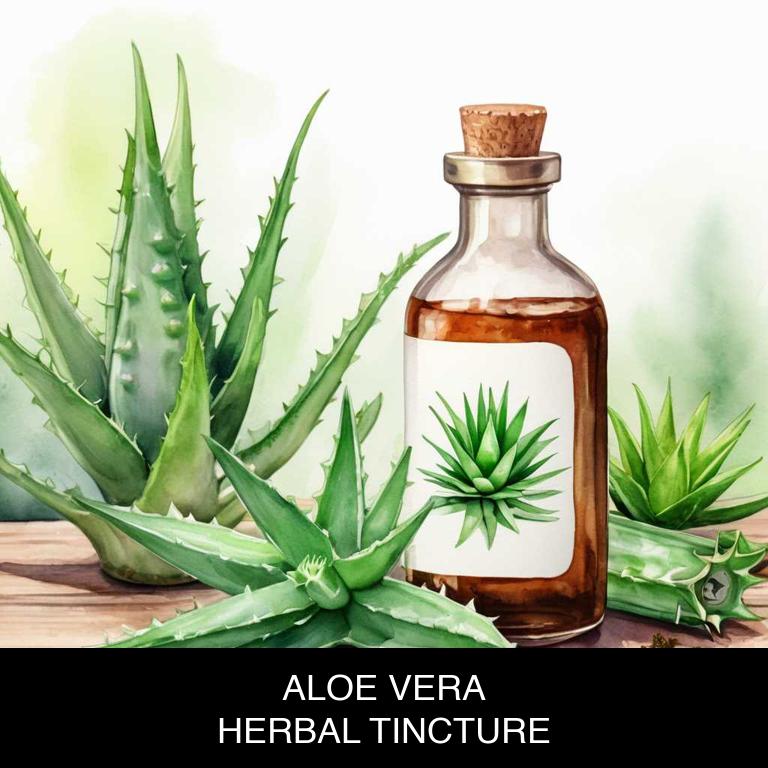
Medicinal Constituents
The list below shows the primary medicinal constituents in Aloe vera tinctures that help with jock itch.
- Aloin: Aloe vera's anthraquinone aloin helps with jock itch by its ability to reduce inflammation and promote the healing of skin lesions.
- Lupeol: Lupeol, a triterpene found in Aloe vera, has antifungal properties that help combat the fungal infections causing jock itch, such as Candida and Trichophyton.
- Cinnamic acid: Cinnamic acid, a phenolic compound in Aloe vera, exhibits antifungal and antibacterial properties, which help to control the growth of pathogens that contribute to jock itch.
Parts Used
The list below shows the primary parts of aloe used to make tinctures for jock itch.
- Leaves: Extracts from Aloe vera leaves contain anti-inflammatory and antifungal properties, which can help soothe and treat jock itch symptoms.
- Barks: The bark of the Aloe vera plant may contain compounds with antifungal and antibacterial properties, which can help combat fungal infections causing jock itch.
- Buds: Aloe vera buds are rich in antioxidants and have anti-inflammatory properties, which can aid in reducing itching, redness, and inflammation associated with jock itch.
Quick Recipe
The following recipe gives a procedure to make a basic aloe for jock itch.
- Harvest aloe vera leaves from mature plants with thick green skin and store them in a cool dry place for up to 7 days.
- Chop 500g of the aloe vera leaves into small pieces and mix with 2 cups of 95 ethanol.
- Steep the mixture in a cool dark place for 2 weeks shaking the container every 2 days.
- Strain the liquid through cheesecloth into a clean container discarding the solids and press on the solids to extract more liquid.
- Store the tincture in a cool dark place for 4 weeks to mature before using it.
4. Cymbopogon citratus
Lemongrass tinctures helps with jock itch because of its natural antifungal and antibacterial properties.
The citral and geraniol present in lemongrass work together to combat the fungal infections that cause jock itch, such as Candida and Trichophyton. Additionally, lemongrass's anti-inflammatory properties help soothe itching and redness associated with the condition.
By applying a lemongrass tincture topically, individuals can effectively treat and manage jock itch, promoting healthy skin and reducing the risk of infection recurrence.
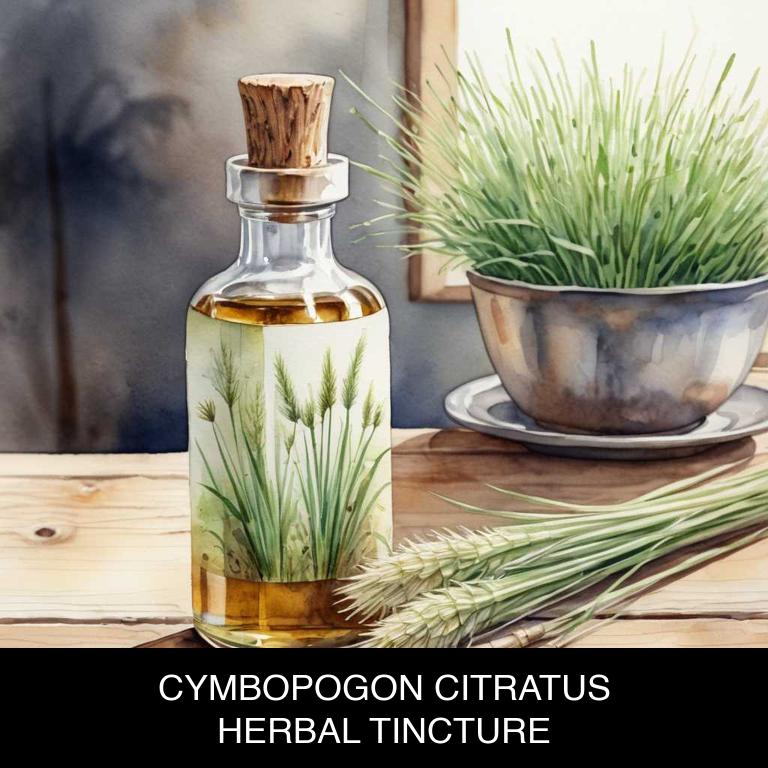
Medicinal Constituents
The list below shows the primary medicinal constituents in Cymbopogon citratus tinctures that help with jock itch.
- Limonene: A terpene that exhibits antifungal properties, helping to inhibit the growth of fungi that cause jock itch.
- Citral: A monoterpenoid that has antiseptic and antifungal properties, aiding in the treatment of jock itch by reducing fungal infections.
- Geranial: An aldehyde that displays antifungal activity, helping to combat fungal infections that cause jock itch.
Parts Used
The list below shows the primary parts of lemongrass used to make tinctures for jock itch.
- Leaves: They are used for their antifungal and antibacterial properties, which help combat fungal infections like jock itch.
- Rhyzomes: Rhyzomes of Cymbopogon citratus contain oils with antifungal properties, which can help soothe and treat jock itch.
- Stems: The stems of Cymbopogon citratus also contain oils with antifungal and antibacterial properties, making them useful in treating jock itch.
Quick Recipe
The following recipe gives a procedure to make a basic lemongrass for jock itch.
- Harvest 1-2 pounds of cymbopogon citratus leaves and stems when they are in their prime and dry them thoroughly for 2 weeks.
- Combine the dried cymbopogon citratus with 80-proof vodka in a 1:5 ratio by weight to create a strong infusion.
- Steep the mixture in a glass jar for 2-6 weeks in a cool dark place with occasional shaking.
- Strain the liquid mixture through a cheesecloth into a separate container to remove the plant material.
- Filter the tincture through a coffee filter to remove any remaining impurities before transferring it to a dark glass bottle for storage.
5. Eucalyptus globulus
Tasmanian blue gum tinctures helps with jock itch because of its antifungal and antibacterial properties, which work synergistically to combat the underlying fungal infections that cause this embarrassing condition.
The tincture's antimicrobial agents also help reduce inflammation and soothe the affected area, providing fast and effective relief from itching and discomfort.
Additionally, the natural ingredients in the tincture promote healthy skin cell growth, reducing the appearance of lesions and scars caused by jock itch.

Medicinal Constituents
The list below shows the primary medicinal constituents in Eucalyptus globulus tinctures that help with jock itch.
- Eucalyptol: Eucalyptol is a terpene that helps reduce inflammation and fights fungal infections, including those causing jock itch, by inhibiting the growth of fungi and bacteria.
- Catechin: Catechin is a phenolic compound that exhibits potent antifungal and antibacterial properties, which help combat the fungal infection responsible for jock itch.
- Cineole: Cineole is a terpene that has been shown to exhibit antifungal properties, which help alleviate the symptoms of jock itch by reducing the severity of the infection and promoting healing.
Parts Used
The list below shows the primary parts of tasmanian blue gum used to make tinctures for jock itch.
- Leaves: The leaves contain essential oils, including eucalyptol, which has antifungal and antibacterial properties that help combat fungal infections.
- Barks: The bark of Eucalyptus globulus is rich in eucalyptol and other compounds that provide anti-inflammatory and antifungal effects to help soothe and treat jock itch.
- Roots: The roots of Eucalyptus globulus are used to create a tincture that can help reduce inflammation and fight fungal infections, providing relief from jock itch symptoms.
Quick Recipe
The following recipe gives a procedure to make a basic tasmanian blue gum for jock itch.
- Gather 200g of dried eucalyptus globulus leaves and 500ml of 80 proof vodka in a clean glass jar.
- Combine the eucalyptus globulus leaves with the vodka in the jar and seal it tightly.
- Store the jar in a cool dark place for 4-6 weeks, shaking it every day.
- Strain the mixture through a cheesecloth or a coffee filter into another clean glass jar.
- Discard the solids and store the tincture in a cool dark place for up to 2 years.
6. Rosmarinus officinalis
Rosemary tinctures helps with jock itch because of its natural antibacterial, antifungal, and anti-inflammatory properties.
The herb's essential oils penetrate deep into the skin to target the fungal infection that causes jock itch, reducing redness and itching. Rosemary's antimicrobial compounds also help to eliminate bacteria and fungi that can exacerbate the condition, promoting a healthy environment for healing.
Additionally, rosemary's anti-inflammatory properties reduce swelling and discomfort associated with jock itch, providing fast and effective relief from symptoms.
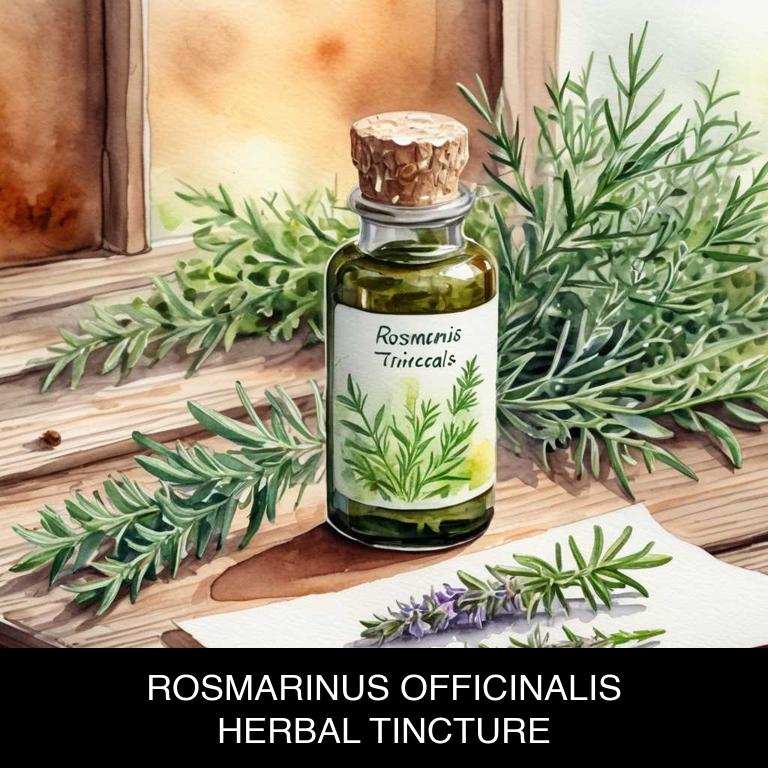
Medicinal Constituents
The list below shows the primary medicinal constituents in Rosmarinus officinalis tinctures that help with jock itch.
- Carnosic acid: As a potent antioxidant and antifungal compound, carnosic acid helps combat fungal infections that cause jock itch.
- Rosmarinic acid: This polyphenolic compound exhibits antifungal and anti-inflammatory properties, which can help alleviate symptoms of jock itch, such as itching, redness, and irritation.
- Rosmarinol: A diterpene with antifungal and antibacterial properties, rosmarinol can help prevent the growth of fungi and bacteria that contribute to jock itch.
Parts Used
The list below shows the primary parts of rosemary used to make tinctures for jock itch.
- Leaves: The leaves of Rosemary are the most commonly used part to make tinctures due to their high concentration of essential oils, which have antimicrobial and antifungal properties that can help combat fungal infections like jock itch.
- Stems: The stems of Rosemary contain a smaller amount of essential oils compared to the leaves but can still be used to make tinctures, which may be beneficial for skin issues like jock itch due to their potential anti-inflammatory properties.
- (optional) barks: Rosemary bark contains some essential oils and has been used in traditional medicine to treat various skin issues, including wounds and infections, although its effectiveness for jock itch is not well-documented.
Quick Recipe
The following recipe gives a procedure to make a basic rosemary for jock itch.
- Harvest the rosmarinus officinalis leaves at the peak of freshness and dry them for 2 to 3 weeks to maintain potency.
- Measure out 1 part of dried rosmarinus officinalis leaves and combine it with 2 parts of 80 proof vodka in a clean glass jar.
- Seal the jar and place it in a cool dark cupboard for 2 to 3 weeks to allow the tincture to steep.
- Strain the tincture through a cheesecloth or a coffee filter into another clean glass container discarding the solids.
- Transfer the tincture to glass dropper bottles and store them in a cool dark cupboard for up to 2 years.
7. Thymus vulgaris
Thyme tinctures helps with jock itch because of its potent antifungal properties, which effectively combat the Candida albicans fungus that causes the infection.
The tannins present in thyme also help to reduce inflammation and itching associated with jock itch, providing relief from discomfort. Additionally, thyme's antimicrobial activity prevents the spread of the infection, promoting a healthy and balanced environment for skin repair and healing.
This natural remedy offers a safe and effective alternative to conventional treatments.
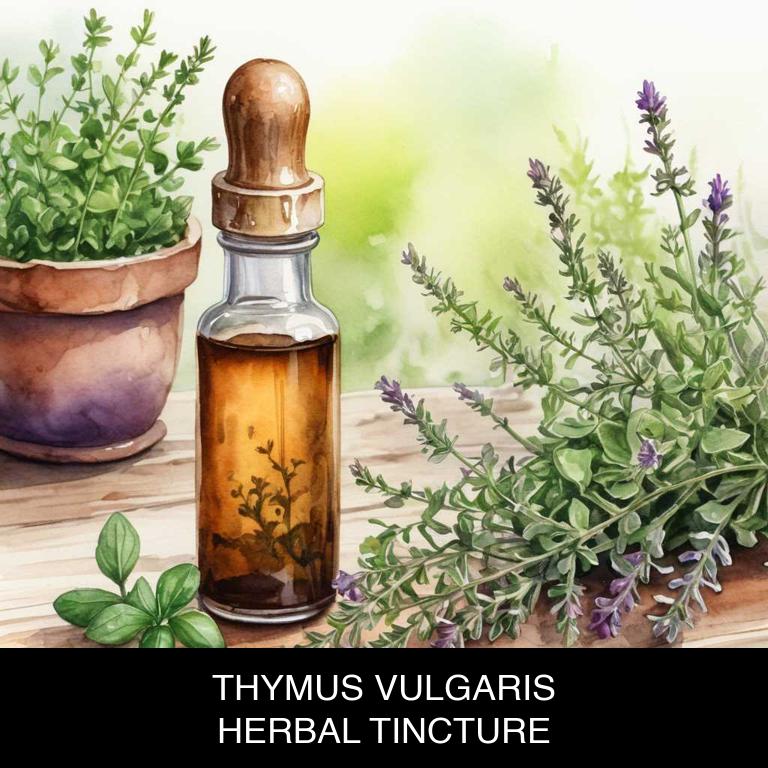
Medicinal Constituents
The list below shows the primary medicinal constituents in Thymus vulgaris tinctures that help with jock itch.
- Thymol: A phenolic compound that exhibits antimicrobial properties, helping to combat the fungal infections (such as Trichophyton and Candida) that cause jock itch.
- Carvacrol: A monoterpenic phenol that has antifungal and anti-inflammatory properties, which help to reduce inflammation and prevent the growth of fungal pathogens that contribute to jock itch.
- Caryophyllene oxide: A sesquiterpene with antifungal properties, which helps to inhibit the growth of fungi that cause jock itch, such as Trichophyton rubrum.
Parts Used
The list below shows the primary parts of thyme used to make tinctures for jock itch.
- Leaves: Thymus vulgaris leaves are commonly used due to their high concentration of thymol, a compound with antimicrobial and antifungal properties.
- Flowers: Thymus vulgaris flowers are used due to their ability to promote wound healing and reduce inflammation.
- Barks: Thymus vulgaris barks are used due to their antimicrobial and antioxidant properties, which can help to soothe and protect the skin.
Quick Recipe
The following recipe gives a procedure to make a basic thyme for jock itch.
- Harvest 25 to 50 grams of fresh thymus vulgaris leaves and flowers in the early morning or late afternoon.
- Dry the harvested plant material in a warm dark place for 1 to 2 weeks to reduce moisture levels.
- Combine 500 milliliters of 95 percent ethanol with 250 milliliters of distilled water to create the solvent.
- Steep 10 grams of the dried plant material in 250 milliliters of the solvent for 2 to 4 weeks in a sealed glass container.
- Strain the tincture through a coffee filter into a clean glass bottle and store it in a cool dark place.
8. Capsicum annuum
Bell pepper tinctures helps with jock itch because it contains anti-inflammatory and antifungal properties that work together to combat the root cause of the infection.
The herbal extract targets the fungal species Malassezia, which is responsible for the itching and burning sensation associated with jock itch. Additionally, bell pepper's antioxidant compounds help soothe and calm the skin, reducing inflammation and promoting healing.
As a result, users have reported significant relief from symptoms and improved overall skin health when using this natural remedy.
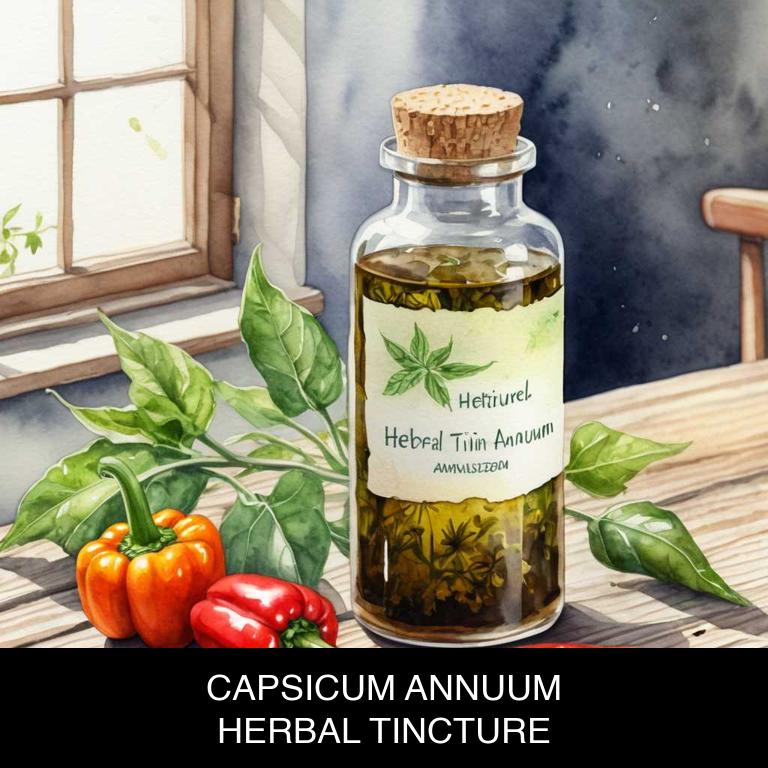
Medicinal Constituents
The list below shows the primary medicinal constituents in Capsicum annuum tinctures that help with jock itch.
- Capsaicin: It helps with jock itch by reducing inflammation and killing fungi, such as Trichophyton rubrum, that cause the infection.
- Capsaicinoids: These compounds help reduce itching and inflammation by inhibiting the production of a chemical called substance P, which transmits pain signals to the brain.
- Flavonoids: They have anti-inflammatory and antifungal properties, which help to soothe the affected area, reduce redness, and combat fungal growth.
Parts Used
The list below shows the primary parts of bell pepper used to make tinctures for jock itch.
- Fruits: The fruits of Capsicum annuum contain capsaicin, which is used to reduce pain and inflammation.
- Leaves: The leaves contain various compounds that may have antifungal properties, although more research is needed to confirm their effectiveness.
- Seeds: The seeds contain capsaicin and other compounds that may help reduce inflammation and alleviate symptoms of jock itch.
Quick Recipe
The following recipe gives a procedure to make a basic bell pepper for jock itch.
- Harvest fresh capsicum annuum fruits when they are fully ripe and have reached their peak color intensity.
- Clean and dry the harvested capsicum annuum fruits thoroughly to prevent contamination and spoilage.
- Use a 1:2 ratio of dried capsicum annuum to 95% ethanol and steep for 2 to 6 weeks.
- Strain the mixture through a cheesecloth or a coffee filter into a clean glass container.
- Store the tincture in a cool dark place for at least 2 weeks before use to mature and stabilize.
9. Solanum lycopersicum
Tomato tinctures helps with jock itch because of its anti-fungal properties, which combat the underlying infection that causes this embarrassing and uncomfortable condition.
The antioxidants present in tomato tinctures also help to reduce inflammation and soothe itching and burning sensations. Furthermore, tomato's antibacterial properties prevent bacterial infections from developing, promoting a healthy skin environment and reducing the risk of recurrence.
This natural remedy is a gentle yet effective solution for alleviating jock itch symptoms.
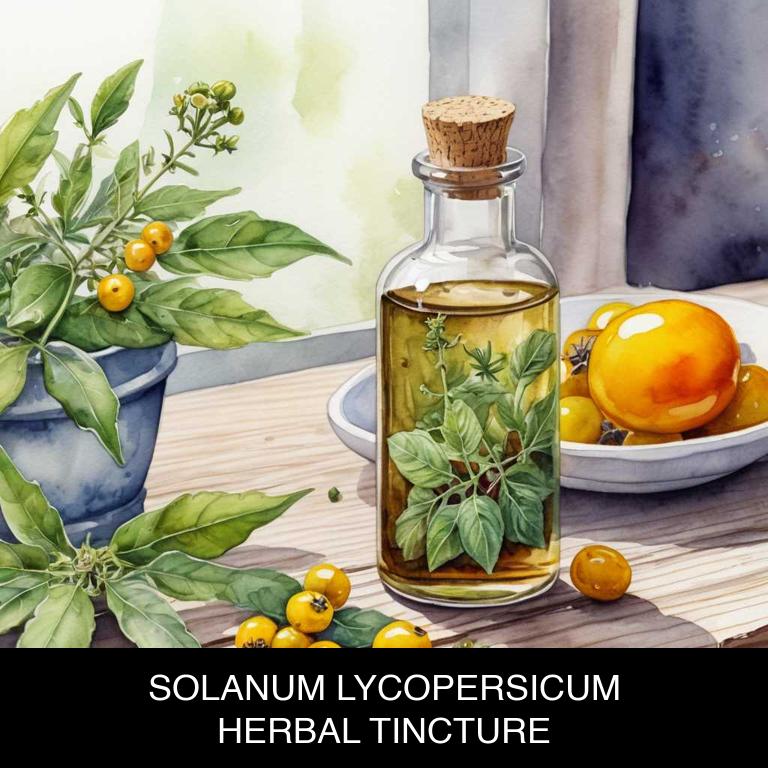
Medicinal Constituents
The list below shows the primary medicinal constituents in Solanum lycopersicum tinctures that help with jock itch.
- Alkaloids: These compounds, specifically solanine and solanidine, have antifungal properties, which can help combat fungal infections such as jock itch.
- Terpenes: Terpenes, like carotenoids and lycopene, exhibit antimicrobial properties, which can aid in reducing the growth of fungi causing jock itch.
- Flavonoids: Flavonoids, such as quercetin, possess anti-inflammatory and antifungal properties, which can help alleviate symptoms of jock itch and prevent further infections.
Parts Used
The list below shows the primary parts of tomato used to make tinctures for jock itch.
- Leaves: They are used due to their antifungal properties, which may help combat fungal infections like jock itch.
- Fruits: Tomato fruits are used for their high lycopene content, which has antioxidant properties that may aid in soothing and treating fungal infections.
- Seeds: Tomato seeds contain compounds with antifungal and antibacterial properties, which could potentially help in treating jock itch.
Quick Recipe
The following recipe gives a procedure to make a basic tomato for jock itch.
- Harvest ripe solanum lycopersicum fruit from a clean and pesticide-free environment.
- Chop the solanum lycopersicum into small pieces and combine with 80 proof vodka.
- Steep the solanum lycopersicum in vodka for 2-6 weeks in a cool dark place.
- Strain the mixture through cheesecloth or a coffee filter to remove solanum lycopersicum pieces.
- Store the herbal tincture in a dark glass bottle with a tight-fitting lid and keep refrigerated.
10. Glycyrrhiza glabra
Licorice tinctures helps with jock itch because of its antifungal properties, which combat the underlying fungal infections that cause this embarrassing condition.
The glycyrrhizin and flavonoids present in licorice root have been shown to inhibit the growth of Candida albicans, a common fungus responsible for jock itch. Additionally, licorice tincture's anti-inflammatory properties help soothe itchy skin, reducing discomfort and promoting healing.
This natural remedy has been traditionally used to treat fungal infections, making it an effective and gentle solution for treating jock itch.

Medicinal Constituents
The list below shows the primary medicinal constituents in Glycyrrhiza glabra tinctures that help with jock itch.
- Glycyrrhizin: This triterpenoid saponin helps with jock itch by exhibiting antifungal properties, inhibiting the growth of fungi such as Trichophyton rubrum that cause the condition.
- Licopyranocoumarin: This phenolic compound has antimicrobial and anti-inflammatory properties, which can help reduce inflammation and combat fungal infections associated with jock itch.
- Isoflavonoids: These plant-derived compounds possess antifungal and anti-inflammatory activities, contributing to the overall efficacy of Glycyrrhiza glabra tinctures in alleviating jock itch symptoms.
Parts Used
The list below shows the primary parts of licorice used to make tinctures for jock itch.
- Roots: Roots are used because they contain high concentrations of glycyrrhizin, a compound with antifungal and anti-inflammatory properties.
- Barks: Barks are used because they possess antimicrobial and antifungal properties that help combat fungal infections, such as those causing jock itch.
- Leaves: Leaves are used because they contain flavonoids and triterpenoid saponins that exhibit antifungal and anti-inflammatory activities, which can aid in the treatment of jock itch.
Quick Recipe
The following recipe gives a procedure to make a basic licorice for jock itch.
- Harvest 100g of dried roots of glycyrrhiza glabra and clean them thoroughly.
- Grind 50g of the roots into a fine powder using a coffee grinder for 5 minutes.
- Combine the powdered roots with 500ml of 95% ethanol in a clean glass jar.
- Steep the mixture in a cool dark place for 2 to 6 weeks shaking the jar daily.
- Strain the liquid through a cheesecloth into a clean glass bottle and discard the solids.
What is the best combination of herbal tinctures to use for jock itch?
The best combination of herbal tinctures that help with jock itch is a blend of Tea Tree Oil (Melaleuca), Garlic (Allium sativum), and Calendula.
Tea Tree Oil has antifungal properties that combat fungal infections, while Garlic's antibacterial and antifungal properties aid in healing. Calendula, with its anti-inflammatory properties, soothes and calms the affected area.
Combine these tinctures in equal parts and apply topically to the affected area several times a day to help alleviate jock itch symptoms and promote healing.
What ailments similar to jock itch are treated with herbal tinctures?
Ailments similar to jock itch that are treated with herbal tinctures are fungal infections such as athlete's foot, ringworm, and nail fungus.
These conditions can be effectively managed with tinctures made from herbs like tea tree oil, lavender, and garlic, which possess antifungal properties.
Additionally, tinctures of Echinacea, goldenseal, and usnea may also help soothe and heal fungal infections, reducing inflammation and promoting healthy skin.